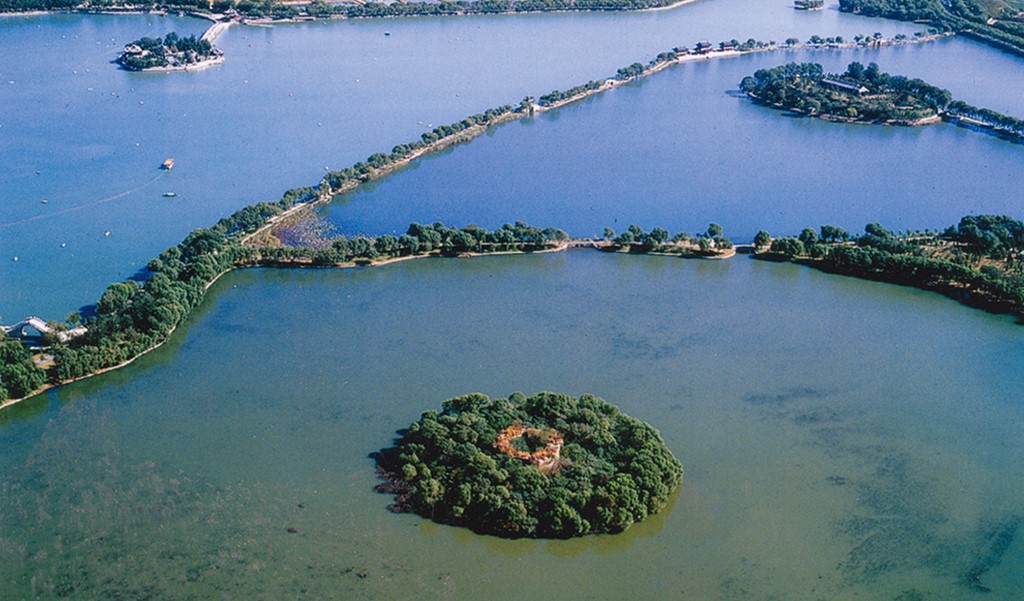
Kunming Lake, once a natural lake where numerous mountain springs in the northwest of Beijing converged, was previously known as Great Lake, Jar Hill Lake, etc. After Beijing became the capital city of the Yuan Dynasty, Guo Shoujing, an expert in irrigation works at the time, supervised the redirection of the spring water from the Divine Mountains in Changping, to the lake. The spring water, drawing in the tributary waters along the way, made the lake into a reservoir that greatly facilitated the transportation of grain. During the Ming Dynasty, a large number of lotus flowers were planted in the lake. In the surrounding area were rice paddies, temples, pavilions and other finely built structures, creating a great view that resembled the landscape of south China. For this reason it became known as the West Lake, after its namesake in the southern city of Hangzhou. With construction of the Garden of Clear Ripples during Emperor Qianlong’s reign (1736-1795), the lake was expanded to its current size. Emperor Qianlong then named it “Kunming”, inspired by Emperor Liuche of the Han Dynasty, who once constructed an artificial lake called the “Kunming Pool” to practise battles on the water. The current lake covers an area of over 200 hectares, making up three quarters of the whole garden. In accordance with the “three islands in one pool” principle for the design of water features in imperial gardens, three islands were built on the lake, namely, the “South Lake Island”, the “Mirror of Government Tower” and the “Hall of Recognition of Talent Island”. The West Causeway, imitating the Su Causeway of the West Lake in Hangzhou, was also constructed. The glistening waters, the meandering banks, well-arranged islands, and a host of architectural structures in different styles, both near and far, all combine to present a wonderful view of the Summer Palace landscape, a view dominated by Kunming Lake. Scientific research in the 1990s showed that the lake dates back over 3,500 years.